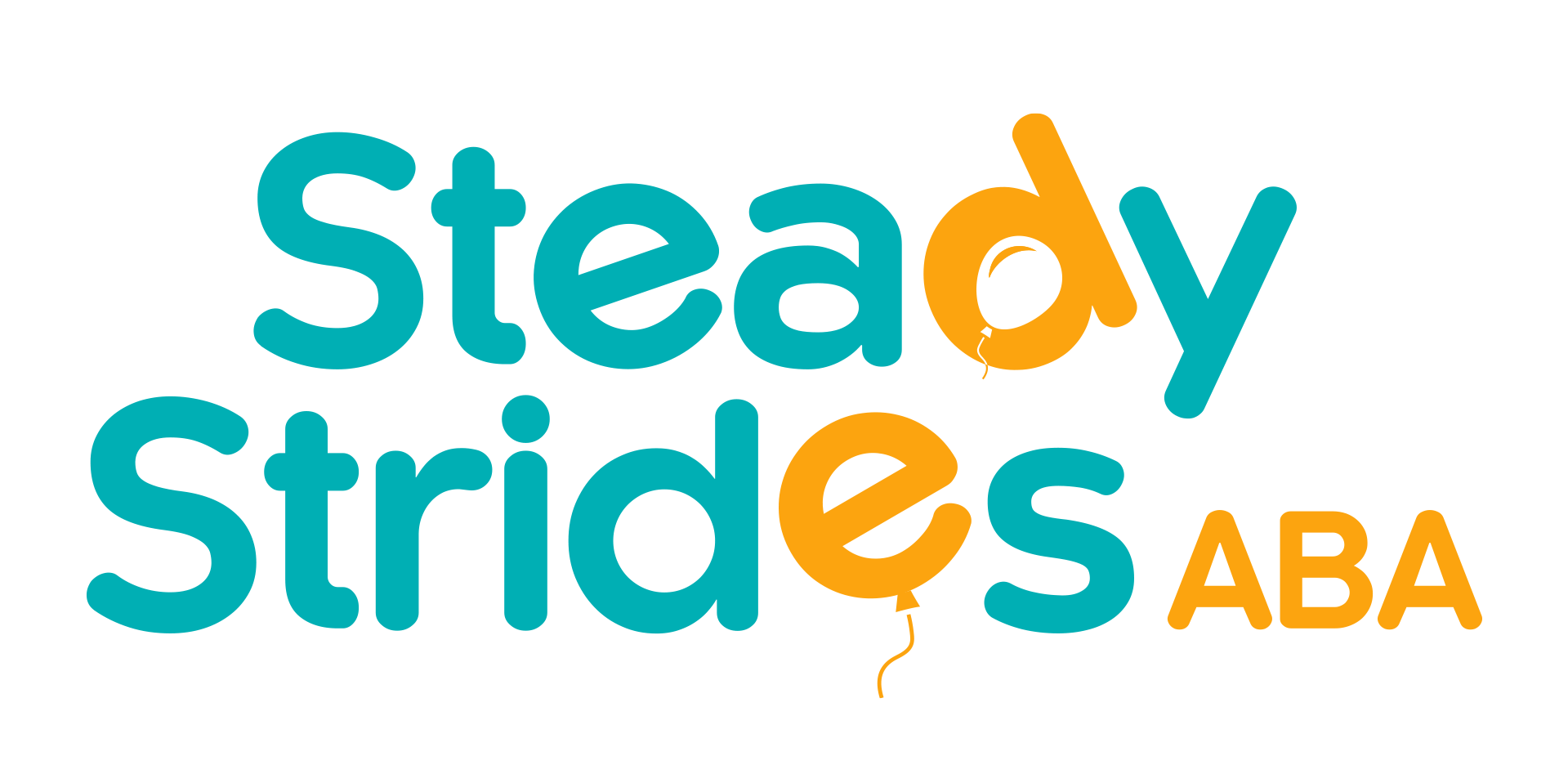Key Highlights
- Tacting is a fundamental skill in ABA therapy that enables individuals with autism to communicate by labeling and naming objects, actions, and events.
- Tacting plays a crucial role in enhancing expressive communication skills and fostering social interaction and engagement for individuals with autism.
- Strategies for teaching tacting in ABA sessions include setting up successful tacting opportunities, utilizing prompts and reinforcement effectively, and incorporating tacting into daily routines and activities.
- Overcoming common challenges in tacting instruction involves addressing non-responsiveness and stimulus overselectivity, as well as tailoring approaches for varied learning styles.
- Measuring progress and success in tacting can be done through the use of tools and metrics for assessing tacting skills, as well as celebrating milestones and adjusting goals.
- Tacting has real-life applications beyond therapy sessions, such as enhancing academic performance and classroom participation, and supporting independence in daily living skills.
Introduction
In the field of Applied Behavior Analysis (ABA) therapy, one of the key goals is to enhance communication skills in individuals with autism spectrum disorder (ASD). Tacting, a fundamental skill in ABA therapy, plays a crucial role in achieving this goal. Tacting involves labeling and naming objects, actions, and events, allowing individuals with ASD to communicate their wants and needs effectively.
Expressive language, the ability to express oneself through verbal or nonverbal communication, is an essential skill for daily living. However, many children with ASD struggle with expressive language, making it challenging for them to communicate their feelings and interact with others. Verbal Behavior (V.B.) therapy, based on the principles of ABA and the theories of behaviorist B.F. Skinner, aims to teach children with autism the power of communication and language.
Tacting is a form of verbal behavior that helps individuals with ASD develop their expressive language skills. By learning to label and name objects, actions, and events, they can effectively communicate their thoughts, preferences, and needs. Tacting goes beyond simply labeling words; it focuses on understanding why and how words are used to make requests and express ideas.
In this blog, we will explore the basics of tacting in ABA therapy, its significance for individuals with ASD, strategies for teaching tacting in ABA sessions, overcoming common challenges in tacting instruction, measuring progress and success in tacting, and real-life applications of tacting beyond therapy sessions.
Understanding the Basics of Tacting in ABA Therapy
Before delving into the role and significance of tacting in ABA therapy, it is important to understand what tacting is and how it relates to individuals with autism spectrum disorder (ASD). Tacting is a fundamental skill that enables individuals to communicate by labeling and naming objects, actions, and events. It is a form of verbal behavior that plays a crucial role in developing expressive language skills in individuals with ASD. By learning to tact, individuals with autism can effectively express their thoughts, preferences, and needs.
Defining Tacting and Its Role in Autism Communication
Tacting, in the context of ABA therapy, refers to the verbal behavior of labeling and naming objects, actions, and events. It is a form of expressive communication that allows individuals with autism spectrum disorder (ASD) to effectively communicate their thoughts, preferences, and needs.
Communication skills are essential for individuals with ASD to navigate the world and interact with others. However, many individuals with autism struggle with expressive language, making it difficult for them to effectively communicate their feelings and needs. Tacting plays a crucial role in developing their expressive communication skills by teaching them to label and name objects, actions, and events.
By mastering tacting, individuals with autism can overcome communication barriers and express themselves more effectively. This not only enhances their ability to interact with others but also promotes their overall well-being and quality of life.
Key Principles Underlying Tacting Techniques
There are three key principles underlying tacting techniques in ABA therapy. The first principle is consistency, which means using the same verbal cue each time a behavior is reinforced. Consistency helps individuals with autism associate the verbal cue with the desired behavior, making it easier for them to understand and respond appropriately.
The second principle is positive reinforcement, whereby verbal cues are used to reinforce desired behaviors rather than punish undesired behaviors. Positive reinforcement is a powerful tool in shaping behavior, as individuals are more likely to repeat behaviors that are rewarded.
The third principle is timely reinforcement, which involves using verbal cues immediately after the behavior is exhibited. Timely reinforcement helps individuals with autism understand the consequences of their actions more quickly, facilitating their learning and development of language skills.
By following these key principles, behavior technicians and ABA professionals can effectively teach tacting skills to individuals with autism in a natural environment, promoting their language development and communication skills.
The Significance of Tacting for Individuals with ASD
Tacting is a powerful tool for individuals with autism spectrum disorder (ASD) as it plays a significant role in their daily lives. By mastering tacting skills, individuals with ASD can communicate their thoughts, preferences, and needs more effectively, allowing them to participate more fully in their daily lives.
Tacting enhances their expressive communication skills and empowers them to express themselves in a way that promotes understanding and engagement with others. It enables individuals with ASD to reach their full potential by overcoming communication barriers and fostering meaningful connections with the world around them.
Enhancing Expressive Communication Skills
Enhancing expressive communication skills is a crucial aspect of ABA therapy for individuals with autism spectrum disorder (ASD). Tacting, as a form of expressive communication, plays a vital role in developing these skills.
Expressive language, the ability to express oneself through verbal or nonverbal communication, is an important skill for individuals with autism. By mastering tacting skills, individuals with ASD can effectively label and name objects, actions, and events, thereby enhancing their expressive language abilities.
Tacting provides individuals with ASD with the tools to communicate their thoughts, preferences, and needs, enabling them to interact more effectively with others and navigate the world around them. It promotes language development and helps individuals with autism express themselves in a way that promotes understanding and engagement with their environment.
Fostering Social Interaction and Engagement
Fostering social interaction and engagement is a key goal of ABA therapy for individuals with autism spectrum disorder (ASD). Tacting, as a fundamental skill in ABA therapy, plays a crucial role in achieving this goal.
Social interaction is an essential aspect of human communication and connection. By mastering tacting skills, individuals with ASD can effectively communicate their thoughts, preferences, and needs, enabling them to engage more fully in social interactions.
Tacting helps individuals with autism develop their communication skills, allowing them to initiate conversations, share their interests, and connect with peers, parents, and caregivers. It promotes behavior analysis by reinforcing desired social behaviors and providing individuals with the tools to navigate social situations more effectively.
By fostering social interaction and engagement through tacting, individuals with ASD can enhance their communication skills and build meaningful connections with others, promoting their overall well-being and quality of life.
Strategies for Teaching Tacting in ABA Sessions
Teaching tacting skills in ABA sessions requires the implementation of effective strategies. By using the right teaching methods and incorporating positive reinforcement, behavior technicians can help individuals with autism develop their tacting abilities.
One strategy for teaching tacting is to set up successful tacting opportunities. This involves creating a supportive environment where individuals with ASD can practice and reinforce their tacting skills. By providing appropriate stimuli and prompts, behavior technicians can facilitate the learning process.
Another strategy is to utilize prompts and reinforcement effectively. Behavior technicians can use verbal and visual prompts to guide individuals with autism in labeling and naming objects, actions, and events. Positive reinforcement is a powerful tool for shaping behavior, and by providing rewards and praise for successful tacting, behavior technicians can motivate individuals with autism to continue developing their tacting skills.
Incorporating tacting into daily routines and activities is also an effective strategy. By integrating tacting opportunities into everyday situations, such as during mealtime or playtime, individuals with autism can practice and reinforce their tacting skills in a natural and meaningful context.
By employing these strategies, behavior technicians can effectively teach tacting in ABA sessions and support individuals with autism in developing their expressive communication skills.
Setting Up Successful Tacting Opportunities
Setting up successful tacting opportunities is a crucial aspect of teaching tacting in ABA sessions. By creating a supportive environment and providing appropriate stimuli, behavior technicians can facilitate the learning and reinforcement of tacting skills in individuals with autism.
ABA programs can be designed to incorporate specific tacting goals and opportunities. This may involve presenting individuals with autism with a range of objects, actions, and events to label and name. By gradually increasing the complexity of the stimuli and providing varying levels of support, behavior technicians can ensure successful tacting experiences.
Successful tacting opportunities should take into account the individual's verbal abilities and provide appropriate prompts and reinforcement. For individuals with limited verbal abilities, behavior technicians may use visual and gestural prompts to guide them in labeling and naming. Verbal prompts can be gradually faded as individuals gain mastery over tacting skills.
By setting up successful tacting opportunities, behavior technicians can create a supportive learning environment that promotes the development of expressive communication skills in individuals with autism.
Utilizing Prompts and Reinforcement Effectively
The effective utilization of prompts and reinforcement is essential in teaching tacting skills to individuals with autism. By providing appropriate prompts and reinforcement, behavior technicians can support individuals in developing their tacting abilities.
Prompts can be used to guide individuals with autism in labeling and naming objects, actions, and events. Verbal prompts, such as direct verbal prompts that provide the exact answer, can be used to help individuals initiate their tacting responses. For example, behavior technicians may hold out a flashcard of a specific object and say, "Say [object]." This direct verbal prompt helps individuals with autism produce the correct response.
Reinforcement is a powerful tool in shaping behavior. Positive reinforcement, such as praise and rewards, can be used to reinforce successful tacting responses. When individuals with autism label or name an object, action, or event correctly, behavior technicians can provide immediate praise and rewards to encourage the repetition of the desired behavior.
By utilizing prompts and reinforcement effectively, behavior technicians can support individuals with autism in developing their tacting skills and promoting the effective use of expressive communication.
Incorporating Tacting into Daily Routines and Activities
Incorporating tacting into daily routines and activities is a valuable strategy for teaching and reinforcing tacting skills in individuals with autism. By integrating tacting opportunities into everyday situations, individuals have the opportunity to practice and reinforce their tacting abilities in a natural and meaningful context.
ABA professionals can work with individuals and their families to identify relevant daily routines and activities where tacting can be incorporated. For example, during mealtime, individuals can label the different foods they are eating. During playtime, they can label the toys they are playing with. By linking tacting to familiar and enjoyable activities, individuals with autism are more likely to engage and actively participate in the learning process.
Incorporating tacting into daily routines and activities also helps generalize the skills learned in therapy sessions to real-life situations. By practicing tacting in natural environments, individuals with autism can transfer their skills and effectively communicate their thoughts, preferences, and needs in various settings.
By actively incorporating tacting into daily routines and activities, ABA professionals can support individuals with autism in developing their expressive communication skills and promoting their independence in daily life.
Overcoming Common Challenges in Tacting Instruction
Teaching tacting skills to individuals with autism can present certain challenges. However, with the right approaches and strategies, these challenges can be overcome, enabling individuals to develop their expressive communication skills effectively.
One common challenge is stimulus overselectivity, where individuals with autism may have difficulty generalizing their tacting skills to new or unfamiliar stimuli. To overcome this challenge, behavior technicians can gradually introduce new stimuli while providing appropriate prompts and reinforcement.
Another challenge is addressing varied learning styles. Individuals with autism have unique learning styles, and it is important to consider and tailor teaching approaches to accommodate these differences. This may involve using visual aids, hands-on activities, or other strategies that cater to individual learning preferences.
Language delays can also pose a challenge in tacting instruction. Some individuals with autism may have limited verbal abilities or struggle with language development. In such cases, behavior technicians can use alternative communication methods, such as augmentative and alternative communication (AAC) systems, to support tacting skills development.
By addressing these common challenges and tailoring approaches to individual needs, behavior technicians can help individuals with autism overcome barriers and successfully develop their tacting skills.
Addressing Non-responsiveness and Stimulus Overselectivity
Non-responsiveness and stimulus overselectivity are common challenges that behavior technicians may encounter when teaching tacting skills to individuals with autism. However, these challenges can be addressed through effective behavior analysis and intervention.
Non-responsiveness occurs when individuals with autism do not initiate or engage in tacting responses. In such cases, behavior technicians can use prompts, reinforcement, and shaping techniques to encourage and facilitate tacting behaviors. By gradually fading prompts and providing reinforcement for incremental progress, behavior technicians can help individuals overcome non-responsiveness.
Stimulus overselectivity refers to the tendency of individuals with autism to focus on specific stimuli and struggle to generalize their tacting skills to new or unfamiliar stimuli. To address stimulus overselectivity, behavior technicians can gradually introduce new stimuli while maintaining consistency in prompts and reinforcement. This helps individuals expand their range of tacting skills and apply them to a wider variety of stimuli.
Through the application of behavior analysis principles and strategies, behavior technicians can effectively address non-responsiveness and stimulus overselectivity, enabling individuals with autism to develop their tacting skills and effectively communicate their thoughts, preferences, and needs.
Tailoring Approaches for Varied Learning Styles
Individuals with autism have varied learning styles, and it is important to tailor teaching approaches to accommodate these differences when teaching tacting skills. By considering and incorporating strategies that align with individuals' learning styles, behavior technicians can promote a deeper understanding and engagement in the learning process.
Some individuals with autism may benefit from visual aids, such as pictures or visual schedules, to support their learning and understanding of tacting concepts. Others may thrive in hands-on activities that provide a tangible experience of labeling and naming objects, actions, and events.
By using a multi-sensory approach, behavior technicians can engage individuals with autism and provide opportunities for them to learn and practice tacting skills in a way that resonates with their learning style. This tailored approach promotes a deeper understanding of tacting and enhances the overall learning experience for individuals with autism.
Measuring Progress and Success in Tacting
Measuring progress and success in tacting is essential to track the development and effectiveness of teaching strategies. By using tools and metrics, behavior technicians can assess individuals' tacting skills and celebrate milestones along the way.
Tools and metrics for assessing tacting skills can include observation checklists, data collection forms, and standardized assessments. These tools provide a structured framework for evaluating individuals' performance in tacting and identifying areas for improvement.
Milestones in tacting can be celebrated to acknowledge the progress and achievements of individuals with autism. By recognizing and reinforcing their successes, behavior technicians can motivate individuals to continue developing their tacting skills and enhance their overall communication abilities.
By regularly measuring progress and celebrating milestones, behavior technicians can ensure a comprehensive and effective approach to teaching and reinforcing tacting skills in individuals with autism.
Tools and Metrics for Assessing Tacting Skills
Assessing tacting skills in individuals with autism requires the use of reliable tools and metrics. By employing these tools and metrics, behavior technicians can systematically evaluate individuals' performance in tacting and identify areas for improvement.
Observation checklists are a useful tool for behavior technicians to record and track individuals' tacting behaviors. These checklists allow for the systematic collection of data and enable behavior technicians to observe and assess individuals' labeling and naming skills in specific contexts.
Data collection forms provide a structured method for behavior technicians to collect and analyze data on individuals' tacting abilities. These forms capture information about the frequency, accuracy, and prompt dependency of tacting responses, providing valuable insights into individuals' progress and areas for further intervention.
Standardized assessments, such as the Assessment of Basic Language and Learning Skills (ABLLS) or the Verbal Behavior Milestones Assessment and Placement Program (VB-MAPP), are powerful tools for assessing tacting skills. These assessments provide a comprehensive evaluation of individuals' expressive communication abilities, including tacting skills, and help inform intervention strategies.
By utilizing these tools and metrics, behavior technicians can assess individuals' tacting skills effectively and tailor intervention plans to support their continued development.
Celebrating Milestones and Adjusting Goals
Celebrating milestones and adjusting goals are important aspects of teaching tacting skills to individuals with autism. By recognizing and reinforcing their achievements, behavior technicians can motivate individuals and foster a positive learning environment.
Milestones in tacting can be celebrated when individuals reach specific goals in their expressive communication abilities. This can include successfully labeling and naming a certain number of objects, actions, or events, or demonstrating increased accuracy and independence in tacting responses.
Celebrating milestones can involve verbal praise, rewards, or other forms of positive reinforcement. By acknowledging and reinforcing individuals' progress, behavior technicians can promote their self-confidence and motivation to continue developing their tacting skills.
Adjusting goals is an ongoing process in teaching tacting. As individuals with autism make progress in their tacting abilities, behavior technicians can modify and set new goals that challenge and extend their skills. This ensures that individuals are continually engaged and motivated to further develop their expressive communication abilities.
By celebrating milestones and adjusting goals, behavior technicians provide individuals with autism with the support and encouragement they need to thrive in their tacting skills development.
Real-Life Applications of Tacting Beyond Therapy Sessions
Tacting has real-life applications beyond therapy sessions for individuals with autism. By effectively applying their tacting skills in daily life, individuals can enhance their independence and develop important daily living skills.
One real-life application of tacting is in enhancing academic performance and classroom participation. By using tacting to label and name objects, actions, and events in the classroom, individuals with autism can improve their understanding and engagement in academic activities.
Tacting also supports independence in daily living skills. By effectively labeling and naming objects, actions, and events related to dressing, hygiene, meal preparation, and cleaning, individuals with autism can develop the necessary skills to navigate their daily lives more independently.
By recognizing the real-life applications of tacting, behavior technicians can help individuals with autism apply their tacting skills beyond therapy sessions, promoting their independence and overall well-being.
Enhancing Academic Performance and Classroom Participation
Tacting plays a significant role in enhancing academic performance and classroom participation for individuals with autism. By effectively using their tacting skills in the classroom, individuals can improve their understanding, engagement, and overall academic success.
In the classroom, tacting allows individuals with autism to label and name objects, actions, and events, thereby enhancing their expressive language abilities. By using tacting skills, individuals can communicate their thoughts, preferences, and needs, leading to improved classroom participation and effective communication with peers and teachers.
Tacting also supports academic performance by helping individuals develop a deeper understanding of concepts and vocabulary. By actively using their tacting skills, individuals can make more specific requests, understand instructions, and participate in classroom activities more effectively.
By recognizing the importance of tacting in academic settings, behavior technicians and educators can support individuals with autism in developing their tacting skills and promoting their academic success.
Supporting Independence in Daily Living Skills
Tacting plays a crucial role in supporting independence in daily living skills for individuals with autism. By effectively using their tacting skills in daily life, individuals can develop the necessary skills to navigate their daily routines and activities more independently.
In daily living skills such as dressing, hygiene, meal preparation, and cleaning, tacting allows individuals with autism to label and name objects, actions, and events. By effectively communicating their thoughts, preferences, and needs through tacting, individuals can develop the skills to take care of themselves and their environment.
Supporting independence in daily living skills empowers individuals with autism to reach their full potential and live fulfilling lives. By recognizing and reinforcing their successes in tacting, behavior technicians and caregivers can promote independence and enhance overall well-being.
By utilizing tacting in daily routines and activities, individuals with autism can develop the skills and confidence to navigate their daily lives more independently and thrive in their full potential.
Conclusion
In mastering tacting in ABA therapy, understanding the basics and principles is crucial for enhancing communication skills in individuals with ASD. By fostering social interaction and engagement, teaching tacting through successful opportunities, prompts, and reinforcement can greatly benefit daily routines. Overcoming challenges like non-responsiveness and tailoring approaches for varied learning styles is essential. Progress can be measured through tools and metrics, celebrating milestones, and adjusting goals accordingly. Real-life applications extend to enhancing academic performance, supporting independence, and addressing FAQs about improving tacting skills for different age groups and utilizing technology for training.
Frequently Asked Questions
How Long Does It Take to See Improvement in Tacting Skills?
The time it takes to see improvement in tacting skills can vary depending on the individual and the intensity of therapy sessions. Progress in tacting skills is achieved through consistent practice and reinforcement in ABA therapy, and mastery of these skills can be reached with continued effort and support.
Can Tacting Techniques Be Applied to Older Children and Adults?
Yes, tacting techniques can be applied to older children and adults. Language development and expressive communication skills can be fostered at any age through ABA therapy. Tacting techniques can be tailored to the individual's needs and abilities, promoting effective verbal behavior and communication.
Are There Any Technology-Aided Tools to Support Tacting Training?
Yes, there are technology-aided tools available to support tacting training in ABA therapy. Augmentative and alternative communication (AAC) systems, such as picture-based communication apps and speech-generating devices, can provide visual and auditory support for individuals with autism in developing their tacting skills and enhancing their communication abilities.
How to Find Qualified ABA Therapists Specializing in Tacting?
To find qualified ABA therapists specializing in tacting, it is recommended to seek recommendations from trusted sources, such as healthcare professionals, educators, or support groups for individuals with autism. Additionally, conducting research, checking credentials, and interviewing potential therapists can help ensure that they have the necessary qualifications and expertise in tacting and working with individuals with autism spectrum disorder.













